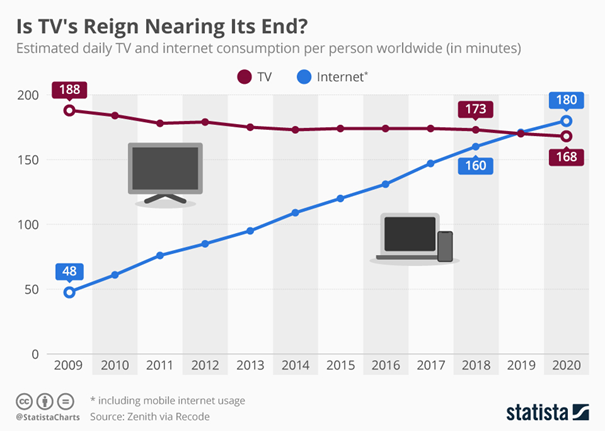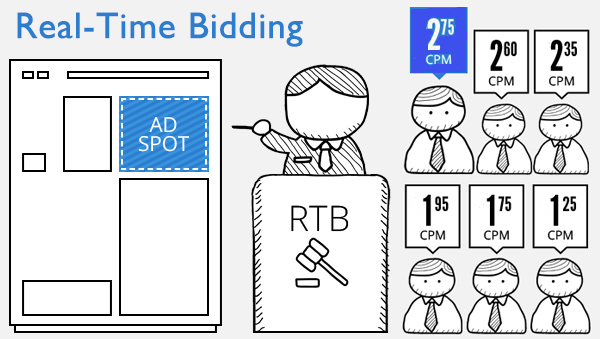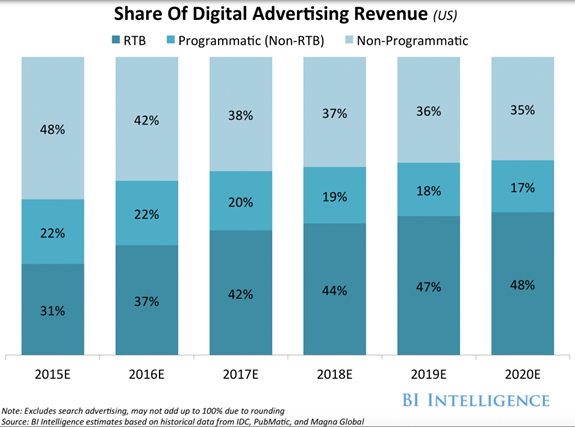How has advertising moved towards Data Science? (Real-Time bidding introduction)
Out of the three types of online advertising: direct, programmatic, and real-time bidding, the last one has been introduced most recently. The real-time bidding transaction starts when the user visits a particular website that loads with foreordained space for banners. At the moment, all advertisers pretending on this place for ads participate in the auction placing their bids. There are many possibilities to implement numerous machine learning methods; which is exactly what DataSentics did by developing a new application AdPicker.

Different forms of advertisement have been around since ancient times. Commercial messages have been found even in the ruins of Pompeii. We have come a long way since those times, and we no longer play bamboo flutes to sell candy as traders did in ancient China. Nevertheless, many advertising principles remain the same.
In the 19th century, the editor of French newspapers La Presse relied on paid advertisement to lower the print price. He managed to extend readership and increase profitability so massively that his approach was soon copied all around the world. Over the years, new advertising channels came into play — radio selling spots, TV commercials, and online ads.

People tend to spend more time browsing the internet than watching TV.
Source: https://nmc-mic.ca/blog/2018/12/06/is-tvs-reign-nearing-its-end/
Nowadays, as people spend more time browsing the internet than watching TV (see the picture above), online ads represent a massive part of advertising. In the world of TV commercials, there is not much to take into account — advertisers can choose a specific channel, desired timing (ideally a prime time) and… that’s it. On the other hand, when it comes to digital marketing, the possibilities are huge — one can choose from different domains and web page topics to address specific groups of people.
There are three ways of digital advertising:
- Non-Programmatic (Direct)
- Programmatic (Non-Real-Time Bidding)
- Real-Time Bidding
Naturally, the direct non-programmatic way of advertising was the first one. As many manual steps and human interactions are required, it is necessary to find the right publisher, negotiate the price, etc. With each new publisher, the company that owns the platform you want to advertise on, starts the whole process from scratch. This means that so-called media planners for campaign handling need to be hired.
A programmatic buying automates this process through a Third-Party Ad Server — a cornerstone of modern direct digital advertising. In its simplest form, programmatic advertising is an automated transaction of buying and selling advertising online on various platforms. An advertiser simply buys a certain amount of banners for a fixed price from a publisher.
Most recently, Real-Time Biding was introduced. A typical transaction begins when someone visits a certain website. The page is loaded together with predefined vacant spaces for ad banners. At this moment, a real-time auction is triggered for each of these banner spots. Every advertiser who is willing to display their banners on this website to this user place their bids.
The highest bidding advertiser then wins the original spot, and their banner is shown. This entire process is executed in a fully automated way to ensure minimal delay for the users.
You can see a simplified version of the process of real-time bidding in the picture below. On the left side, there’s a website schema with a vacant ad spot, which is being traded in the auction. Advertisers on the right side place their bids, and the highest one wins the banner.

The criteria for bidding on particular types of consumers and websites can be very complex as they need to consider all information about a user from cookies and other sources. Probabilistic models can be used to determine the probability of a click or a conversion, given the user’s history data. This probability can then determine the bid size for the respective advertising slot and specific user. In the end, the highest bid wins. In the past, the winner paid the price of the second-highest offer. Now the winner often pays the price they actually offered — depending on the specific setting of each auction.
You can see in the picture below that previously, the majority of ads was bought through the non-programmatic way, and RTB was applied only on 31% of ads. However, year by year, RTB is used more often and, therefore, becomes more important.

Share of Digital Advertising Revenue.
Source: https://blog.splicky.com/2015/programmatic-share-of-digital-ad-revenue-us/
As you can imagine, there is plenty of space for various machine learning models and other data science cool stuff in the RTB process. With a wide variety of options, the real-time auction can be augmented in many ways. By specifying the bid multipliers for each domain or user, it is possible to target ads on certain websites (or users) and on other sites, buy ads cheaper.
In DataSentics, we developed a product called AdPicker, which is specifically designed exactly for these purposes. Stay tuned to hear more about it in the coming articles!
 Search
Search



